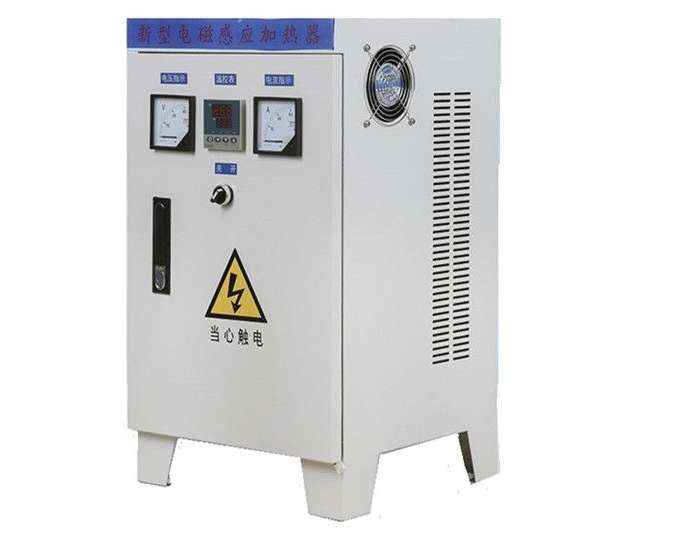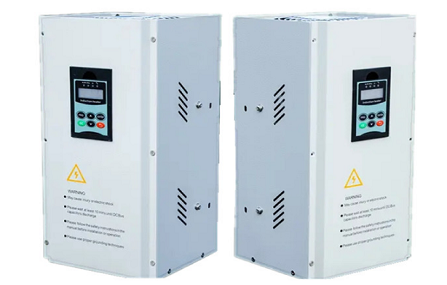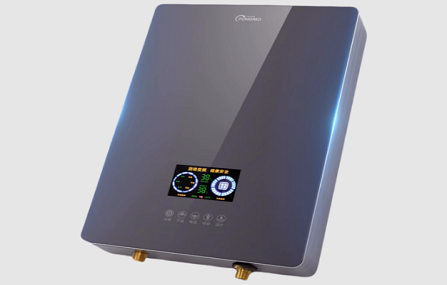Electromagnetic induction heating has revolutionized industrial processes and has become a cornerstone technology in modern manufacturing. We recognize the profound impact this technology has on efficiency, sustainability, and precision across various sectors. An induction heater consists of an electromagnet and an electronic oscillator that passes a high-frequency alternating current (AC) through the electromagnet. The rapidly alternating magnetic field penetrates the object, generating electric currents inside the conductor called eddy currents.
What is electromagnetic induction heating?
Induction heating, method of raising the temperature of an electrically conductive material by subjecting it to an alternating electromagnetic field. The electric currents induced in the object (although it is electrically isolated from the source of the field) bring about dissipation of power in the form of heat.
At its core, electromagnetic induction heating operates on the principle of electromagnetic induction. When an alternating current passes through a coil, it generates a rapidly changing magnetic field that induces eddy currents within the conductive material placed inside this field. These eddy currents create localized heating due to the material's inherent electrical resistance. We appreciate that this method of heating is not only rapid but also highly controlled, ensuring that energy is directly delivered to the target area without unnecessary thermal losses.
Enhanced Efficiency and Rapid Heating
One of the most striking advantages of electromagnetic induction heaters is their exceptional efficiency. Unlike traditional heating methods, which often rely on conduction or convection, induction heaters directly energize the material. This results in:
- Minimal Energy Loss: With energy being transferred directly to the workpiece, minimal heat is lost to the surrounding environment.
- Accelerated Heat-Up Times: Electromagnetic induction provides near-instantaneous heating, dramatically reducing cycle times and increasing throughput.
- Precision Targeting: Since only the material subjected to the magnetic field heats up, the risk of unwanted thermal damage to adjacent components is greatly minimized.
By focusing energy where it is needed most, electromagnetic induction heaters can optimize processes in industries such as metalworking and automotive manufacturing. We have observed that these efficiencies contribute to lower operational costs and improved product quality.

Precise Process Control and Uniform Heating
Precision is critical in modern industrial applications, and electromagnetic induction heaters excel in this regard. We leverage these systems for their ability to provide uniform and controllable heat distribution. Key benefits include:
- Consistent Temperature Profiles: The heating process is highly repeatable, ensuring that each batch of material receives the exact amount of energy required.
- Rapid Modulation of Heat Input: With advanced controllers, the heating intensity can be finely tuned in real time, enabling precise control over the process.
- Localized Heating: Only the targeted areas reach the desired temperature, reducing the risk of warping or distortion in the workpiece.
This precision is vital in processes such as hardening, annealing, and soldering, where even minor temperature deviations can compromise the integrity of the final product. We rely on electromagnetic induction heating for applications that demand stringent temperature control and high repeatability.
Cost-Effective Operation and Energy Savings
Economic considerations are paramount in any industrial process, and electromagnetic induction heaters provide significant cost savings. The advantages that contribute to their cost-effectiveness include:
- Lower Energy Consumption: Since induction heating minimizes energy waste, operational costs are substantially reduced. Energy savings translate directly to reduced production costs.
- Reduced Maintenance Requirements: With fewer moving parts and a non-contact heating process, these systems experience less wear and tear. We note that the longevity and reliability of induction heaters often lead to lower maintenance expenses over time.
- Faster Processing Times: The rapid heating capability of induction systems means that production cycles are shorter, leading to higher throughput and improved productivity.
For companies seeking to optimize their production processes while minimizing expenses, the economic advantages of electromagnetic induction heating are clear. We have consistently seen improved return on investment (ROI) in applications where induction heating is implemented.
Environmental and Safety Benefits
In today's industrial landscape, environmental sustainability and worker safety are increasingly important. Electromagnetic induction heaters offer several key benefits in these areas:
- Cleaner Process: Induction heating eliminates the need for open flames or combustion, significantly reducing emissions and the associated environmental impact.
- Improved Safety: The absence of direct flames or hot surfaces minimizes the risk of accidents. Additionally, the non-contact nature of the process reduces the potential for contamination and accidental burns.
- Lower Operational Footprint: With a more efficient use of energy and reduced emissions, electromagnetic induction heating contributes to a smaller carbon footprint, aligning with global sustainability initiatives.
By integrating these heaters into industrial processes, we not only achieve operational excellence but also demonstrate a commitment to environmental responsibility and the safety of our workforce.
Wide Range of Industrial Applications
The versatility of electromagnetic induction heating is one of its most appealing attributes. We have seen its successful application across a myriad of industries, including:
- Metal Forging and Hardening: Induction heating provides the rapid and uniform heating necessary for processes such as hardening, tempering, and annealing. This ensures that metals reach the desired microstructure quickly and uniformly.
- Automotive and Aerospace: Components in these sectors often require precise thermal treatment. Electromagnetic induction heating meets these demands by offering controlled heating that enhances the durability and performance of critical parts.
- Electronics Manufacturing: In the production of solder joints and the assembly of sensitive components, precise temperature control is vital. Induction heaters facilitate reliable and repeatable thermal processes, which are essential for maintaining high-quality standards.
- Cooking and Food Processing: Beyond industrial applications, induction heating is also widely used in domestic and commercial cooking. The technology allows for rapid heating and precise temperature control, making it ideal for culinary applications.
The adaptability of electromagnetic induction heating across such diverse sectors is a testament to its robust performance and inherent advantages. We leverage this technology in various contexts to drive innovation and improve process efficiency.
Innovative Design and Operational Flexibility
Electromagnetic induction heaters are not only efficient but also offer remarkable design flexibility. This flexibility manifests in several ways:
- Customizable Configurations: The design of induction heating systems can be tailored to meet the specific requirements of different processes. From coil design to power delivery, every aspect can be optimized for maximum performance.
- Scalability: Whether for small-scale laboratory experiments or large industrial operations, induction heating systems can be scaled to fit the application. This scalability makes them an attractive option for a wide range of operational sizes.
- Integration with Automation: Modern induction heating systems can be seamlessly integrated into automated production lines. With advanced sensors and real-time monitoring, these systems contribute to a more efficient and automated manufacturing process.
The combination of innovative design and operational flexibility allows us to deploy induction heating solutions in environments where traditional heating methods would be impractical or inefficient.
Conclusion
Electromagnetic induction heating stands out as a game-changing technology that offers unparalleled efficiency, precision, and environmental benefits. We have seen firsthand how the direct transfer of energy minimizes waste, accelerates processing times, and delivers uniform heating, making it the ideal choice for modern industrial applications. From cost-effective operation and reduced maintenance to enhanced safety and environmental sustainability, the advantages of electromagnetic induction heaters are clear.
By embracing the rapid advancements in digital control, power density, and material compatibility, we are well-positioned to meet the demands of the future. As industries continue to seek innovative ways to improve efficiency and reduce their environmental footprint, electromagnetic induction heating remains at the forefront of these efforts, driving progress across a diverse range of sectors.








